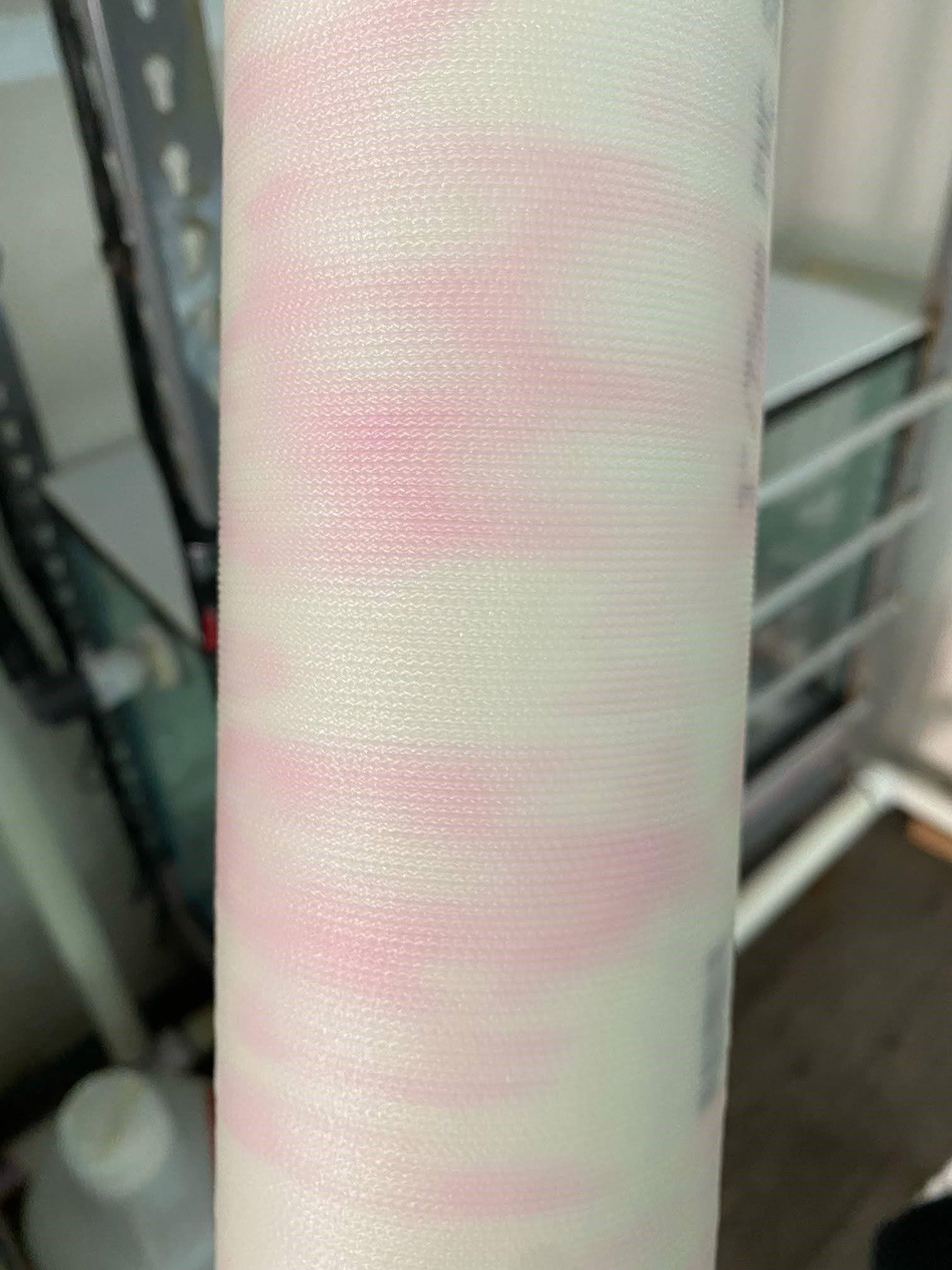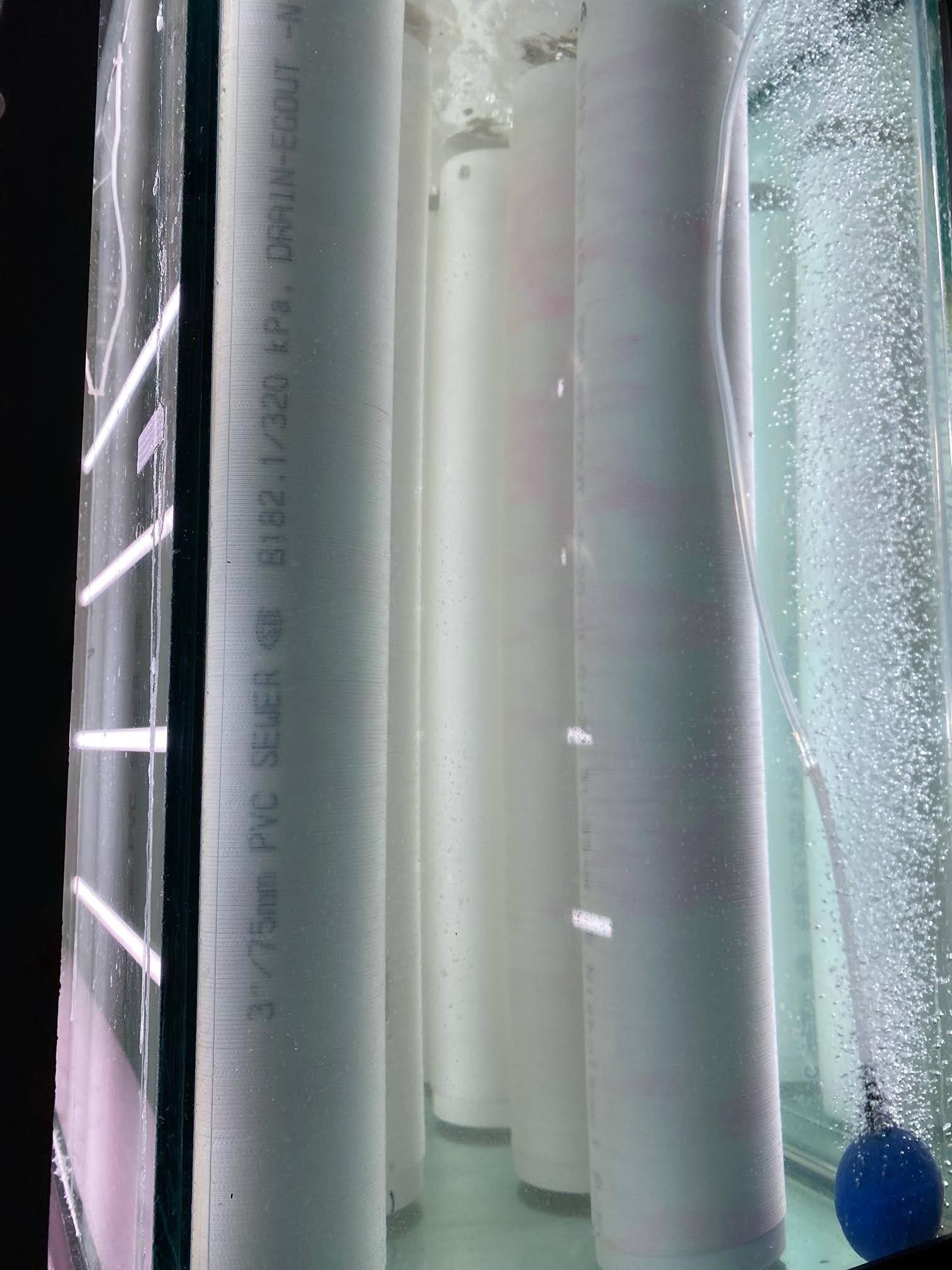Kelp disease: Pink non-cyanobacteria spots on spools
-
Hi everyone,
Have you seen pink spots like the ones in these images on your spools? The images have a particularly bad "pink" outbreak, but any disease (pink or not) is of interest to me.
I am doing a PhD studying the microbiome of kelp and have encountered these pink spots in some nurseries. Following illumina 16S sequencing, I found that a specific bacteria is enriched on these pink spots.
If you grow kelp and got this far, regardless of if you have seen pink spots or not, could you fill out this short survey so I can get a handle on how widespread this problem is https://docs.google.com/forms/d/e/1FAIpQLSebKVrRxHYOauJeHs1AgCuiSRw8uPKzu2qRxaTgW4q5pw0NEw/viewform?usp=sf_link
Thanks!
Siobhan Schenk

@siobhan_schenk256 While at WHOI i experienced this type of contamination and I know multiple nurseries in New England that have experienced this type of contamination. @thew_suskiewicz @margaret_aydlett @david_labbe
@david_bailey Thanks for the connection.
@siobhan_schenk256 I filled out survey, don't hesitate to reach out directly if you have any further questions.
-Dave
Thanks you so much both!! I will keep updating the community as the research progresses.
@david_bailey Thanks for the connection.
@siobhan_schenk256 I filled out survey, don't hesitate to reach out directly if you have any further questions.
-Dave
Thanks you so much both!! I will keep updating the community as the research progresses.
@siobhan_schenk256 It can be tough to save a spool when the contamination gets this far--but we put a bunch of work into building our nursery in a way to avoid contamination in the first place.
We heavily process water, using protein skimming, ozone injection, mechanical filtration down to .2 micron and UV sterilization at three different points in the system.
Spore extraction is another moment vulnerable to contamination vectors and sanitation is especially important here--even switching tongs between steps to minimize any contact that is avoidable.
When spools do start to show these types of pathogens operators can try to scrape the effected areas and if that doesn't control the growth go 'nuclear' and use ethanol on a rag to dab effected areas. Spools should be left out in the air for a sufficient time for the ethanol to evaporate after this treatment.
@toby_sheppardbloch Hi Toby, thanks for replying here as well.
Where I interned follows the same ethanol procedure that you described for small pink spots, in addition to moving the spools to a quarantine tank after treatment. The photos I posted here actually got this pink overnight, so I just swabbed them and then we disposed of the spools. Most of the time, the pink is a relatively small spot.
@toby_sheppardbloch Hi Toby, thanks for replying here as well.
Where I interned follows the same ethanol procedure that you described for small pink spots, in addition to moving the spools to a quarantine tank after treatment. The photos I posted here actually got this pink overnight, so I just swabbed them and then we disposed of the spools. Most of the time, the pink is a relatively small spot.
@siobhan_schenk256 I have not seen pink on the spools, but I have seen it rarely on the bottom of my tanks when detritus is present. I was told it is a pseudomonas.
@elizabeth_savage19 Neat! It could be a pseudomonas, which is in Pseudoalteromonadaceae.... did someone sequence it for you?
The Pseudoalteromonadaceae are pretty weedy, so it would make sense that fast growing opportunistic bacteria are in that taxonomic group.
The bacteria that I consistently find that is highly associated with the "spool pink" is in the genus Algicola, which is also in the Pseudoalteromonadaceae.
I have not seen pink on the bottom of the tanks like you describe, but others have told me they have seen this as well. Are you concerned about the pink on the bottom of your tanks in terms of your crops, or do you find that just moving the spools out to a clean tank is okay to stop the "tank bottom pink" from spreading?
@elizabeth_savage19 Neat! It could be a pseudomonas, which is in Pseudoalteromonadaceae.... did someone sequence it for you?
The Pseudoalteromonadaceae are pretty weedy, so it would make sense that fast growing opportunistic bacteria are in that taxonomic group.
The bacteria that I consistently find that is highly associated with the "spool pink" is in the genus Algicola, which is also in the Pseudoalteromonadaceae.
I have not seen pink on the bottom of the tanks like you describe, but others have told me they have seen this as well. Are you concerned about the pink on the bottom of your tanks in terms of your crops, or do you find that just moving the spools out to a clean tank is okay to stop the "tank bottom pink" from spreading?
@siobhan_schenk256 Hi all, I thought I should post an update about this!
I posted a pre-print online for this chapter of my thesis. It is currently under peer-review at the Journal of Applied Phycology. https://www.biorxiv.org/content/10.1101/2025.01.17.633665v1 (click on "Preview PDF" to see the full article).
I would love to hear about your thoughts if you have time to read it and please let me know if something is unclear. I will have to make edits to the text as part of peer-review process, so I hope to incorporate your feedback as well.
Although this article is about pink-spot disease, my broader goal is to start real long-term collaborations with growers to understand diseases and other microbe-related issues in macroalgal cultivation as early as possible. I'm quite invested in the cultivation world and I hope to stay involved after finishing my PhD.
Hi everyone, one last update.... Here is the publication in the Journal of Applied Phycology!
pink spot disease publication
@siobhan_schenk256 Thanks for following up with the paper!
Hi everyone, one last update.... Here is the publication in the Journal of Applied Phycology!
pink spot disease publication
@siobhan_schenk256 Thanks for following up with the paper!